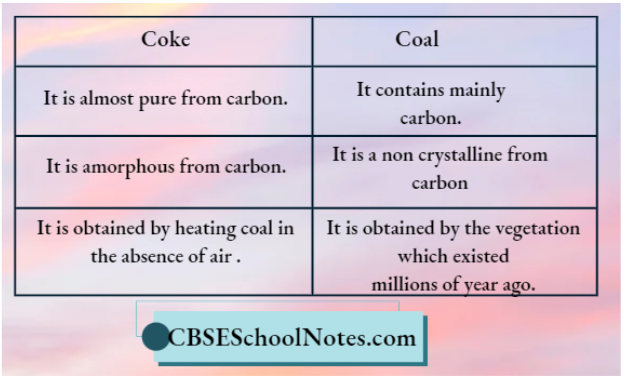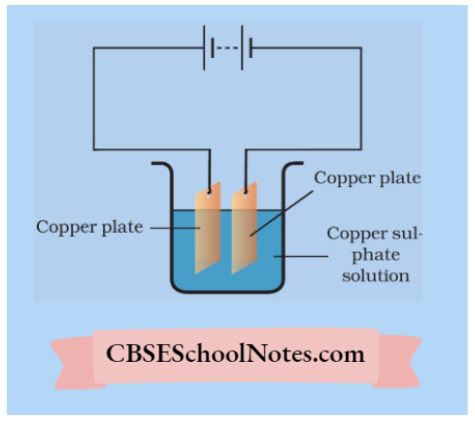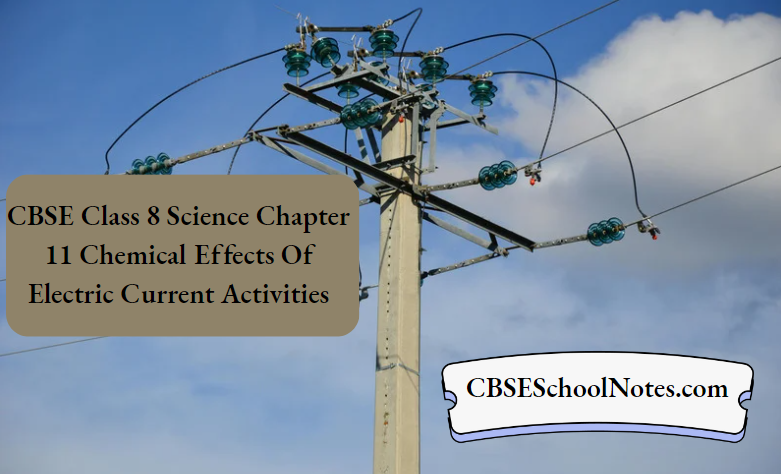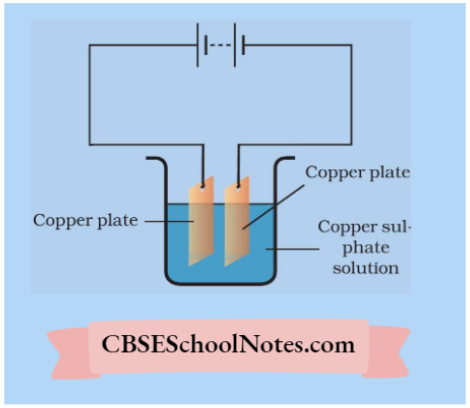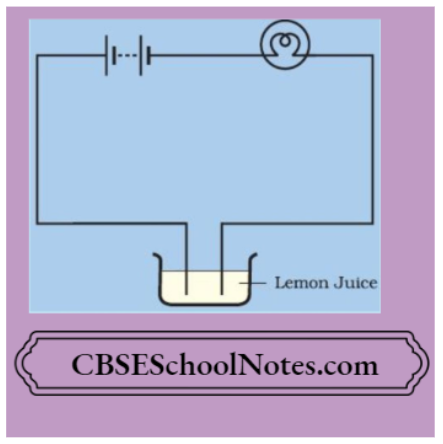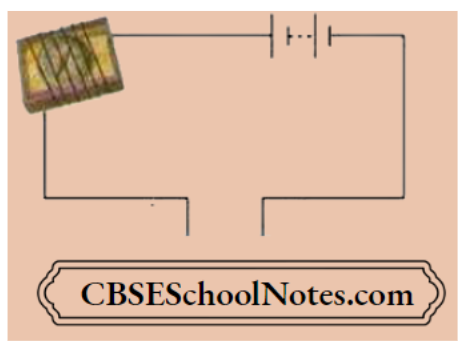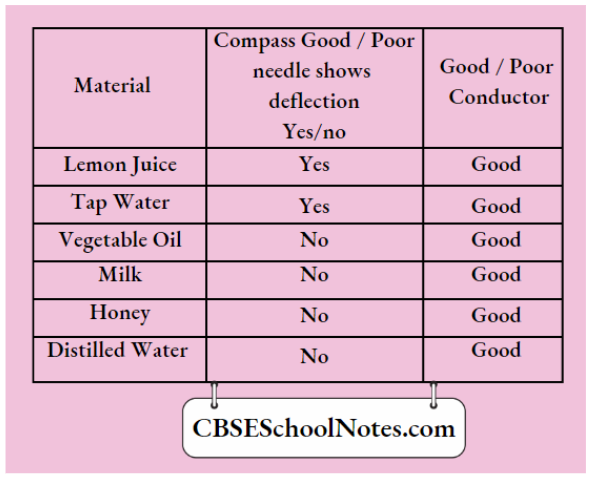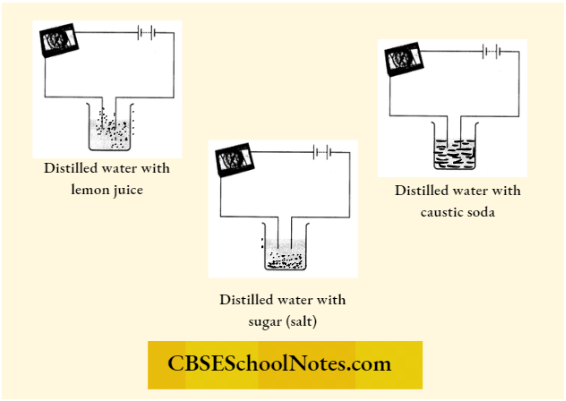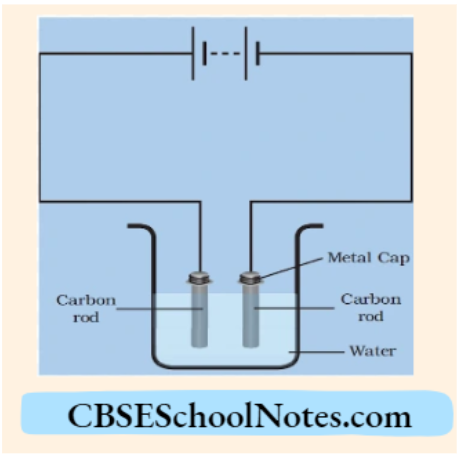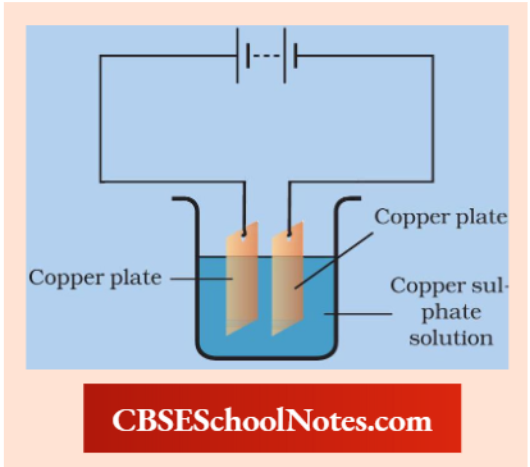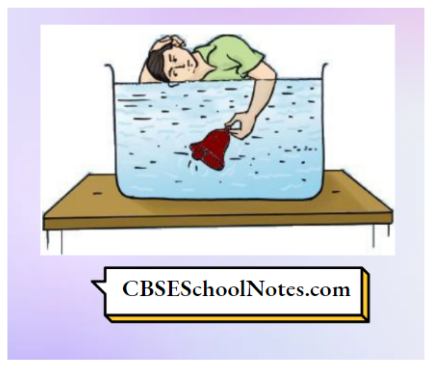Chapter 11 Chemical Effects Of Electric Current Fill In The Blanks
Question 1. Materials which do not allow an electric current to pass through them are called_____________
Answer: Insulator
Question 2. Small amounts of a mineral salt present naturally in water makes it a _____________of electricity
Answer: Good Conductor
Question 3. LED glows even when an electric current passes through it
Answer: Small
Read And Learn More CBSE Class 8 Science Question And Answers
Question 4. If we pass current through a conducting solution, then
_____________effect takes place.
Answer: Chemical
Question 5. A liquid that conducts electricity due to the presence of ions is called_____________
Answer: Electrolyte
Question 6. The object to be electroplated is taken as_____________ electrode.
Answer: Negative
Question 7. One of the most common applications of the chemical effect of electric current is
Answer: Electroplating
Question 8. Electroplating is used to give more ______________ to the cheap objects.
Answer: Attraction/shining
Question 9. Electroplating of_____________ is done on objects like water taps and cycle bells to give them a shiny appearance.
Answer: Chromium
Question 4. LEDS glow if a longer lead is connected to the ________ terminal of the battery and the shorter lead is connected to __________terminal of the battery.
Answer: Positive, negative
Question 5. The deposition of a layer of gold on silver ornaments is known as __________
Answer: Eletroplating
Question 1. Most liquids that conduct electricity are solutions of ____________ and ____________
Answer: Acids, bases, salts
Question 2. The passage of an electric current through a solution causes ____________ effects.
Answer: Chemical
Question 3. If you pass current through copper sulphate solution, copper gets deposited on the plate connected to the____________terminal of the battery.
Answer: Negative

Chapter 11 Chemical Effects Of Electric Current True/False
Question 1. Some liquids are good conductors of electricity, and some are poor conductors.
Answer: True
Question 2. Distilled water conducts the electric current.
Answer: False
Question 3. Adding sugar makes pure water conductive.
Answer: False
Question 4. Most liquids that conduct electricity are solutions of acids, bases, and salts.
Answer: True
Question 5. An electric bulb glows due to the chemical effect of electricity.
Answer: False
Question 6. The passage of an electric current through a conducting liquid causes chemical reactions.
Answer: True
Question 7. The chemical effect of electric current is used in the purification of salts.
Answer: False
Question 8. The chemical reaction brought about by an electric current may produce changes in the colour of solutions.
Answer: True
Question 9. Electrolysis is a chemical change.
Answer: True
Question 10. During the electrolysis of water, hydrogen gas is liberated at the anode.
Answer: False
Question 11. During electroplating, the object to be electroplated is made the anode.
Answer: False
Question 6. Due to the heating effect of the current, the bulb produces light.
Answer: True
Question 7. LEDs are not a better option than an electric bulb in a tester.
Answer: False
Question 8. Vegetable oil mixed with distilled water is a good conductor of electricity
Answer: False
Chapter 11 Chemical Effects Of Electric Current Match The Columns
Question 1. Match Column 1 with Column 2.

Answer: (a)-(4), (b)-(5), (c)-(1), (d)-(2), (e)-(3), (f)-(5)
Chapter 11 Chemical Effects Of Electric Current: Assertion-Reason Questions
The following questions consist of two statementsAssertion (A) and Reason (R). Answer these questions by selecting the appropriate option given below.
- Both A and R are true, and R is the correct explanation of A.
- Both A and R are true, but R is not the correct explanation of A.
- A is true, but R is false.
- A is false, but R is true.
Question 1.
Assertion (A) Pure water is a poor conductor of electricity.
Reason (R) Pure water contains many minerals that are beneficial for human health.
Answer: 3. A is true, but R is false.
Question 2.
Assertion (A) Water decomposes into hydrogen and oxygen on heating at high temperatures.
Reason (R) The Chemical effect of the current is used to decompose chemical compounds into their elemental form.
Answer: 2. A is false, but R is true.

The following questions consist of two statementsAssertion (A) and Reason (R). Answer these questions by selecting the appropriate option given below
- Both A and R are true, and R is the correct explanation of A.
- Both A and R are true, but R is not the correct explanation of A.
- A is true, but R is false.
- A is false, but R is true.
Question 3.
Assertion (A) Sea water is a good conductor of electricity.
Reason (R) Sea water contains different types of salts.
Answer: Sea water contains different types of salts and Ions. These salts are responsible for conducting electricity. This is the reason that seawater is a good conductor of electricity.
Question 4.
Assertion (A) Distilled water is a poor conductor of electricity.
Reason (R) Distilled water contains a small amount of mineral salt, which makes it a poor conductor.
Answer: Distilled water is a poor conductor ofelectricity as it is free from mineral salts.
Question 5.
Assertion (A) A magnetic compass can be used in place of an electric bulb to make a tester.
Reason (R) A compass gets deflected when it is placed near a current-carrying conductor.
Answer: We can detect the presence of electric current with the help of magnetic compass. A compass starts deflecting when it is placed nearby a current carrying wire.
Question 6.
Assertion (A) Materials like wheel rims, handlebars of bicycles, etc, are coated with chromium metal to make it more shiny and attractive.
Reason (R) Chromium metal does not corrode and saves materials from scratches.
Answer: Chromium metal is less reactive. It does not corrode easily. That’s why materials like rims, handle of bicycles etc., arc coated with chromium metal.

![]()
